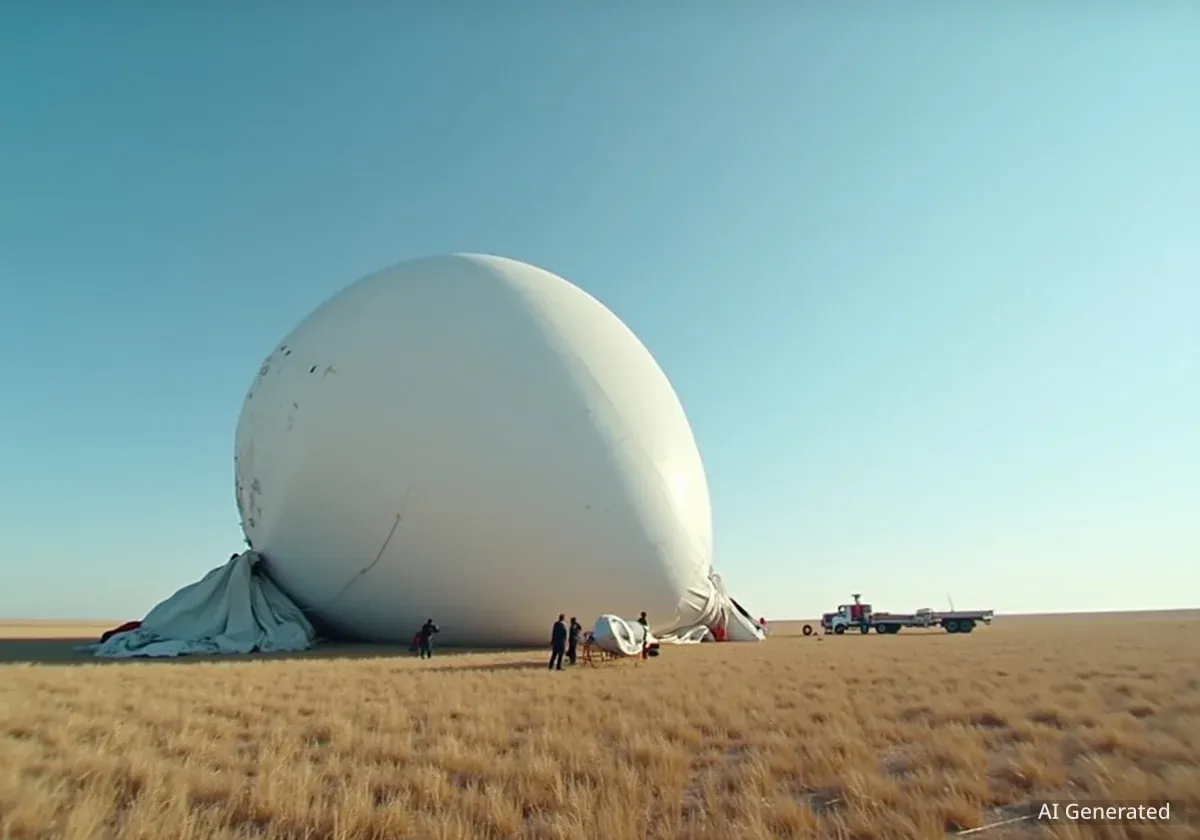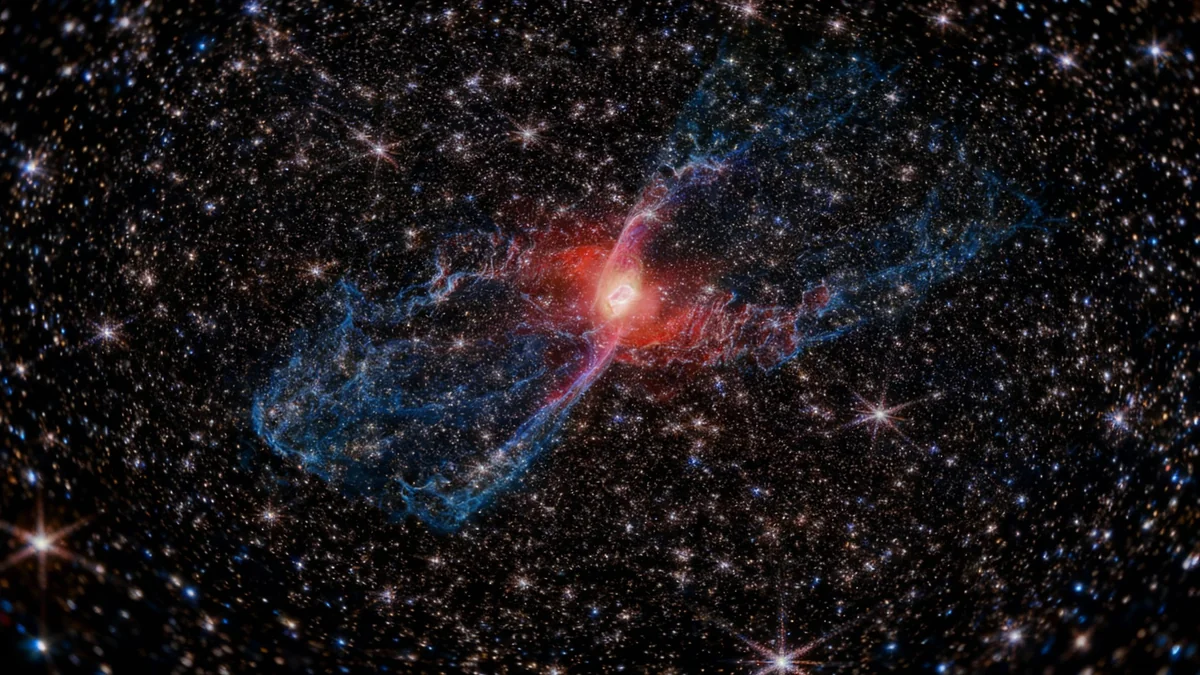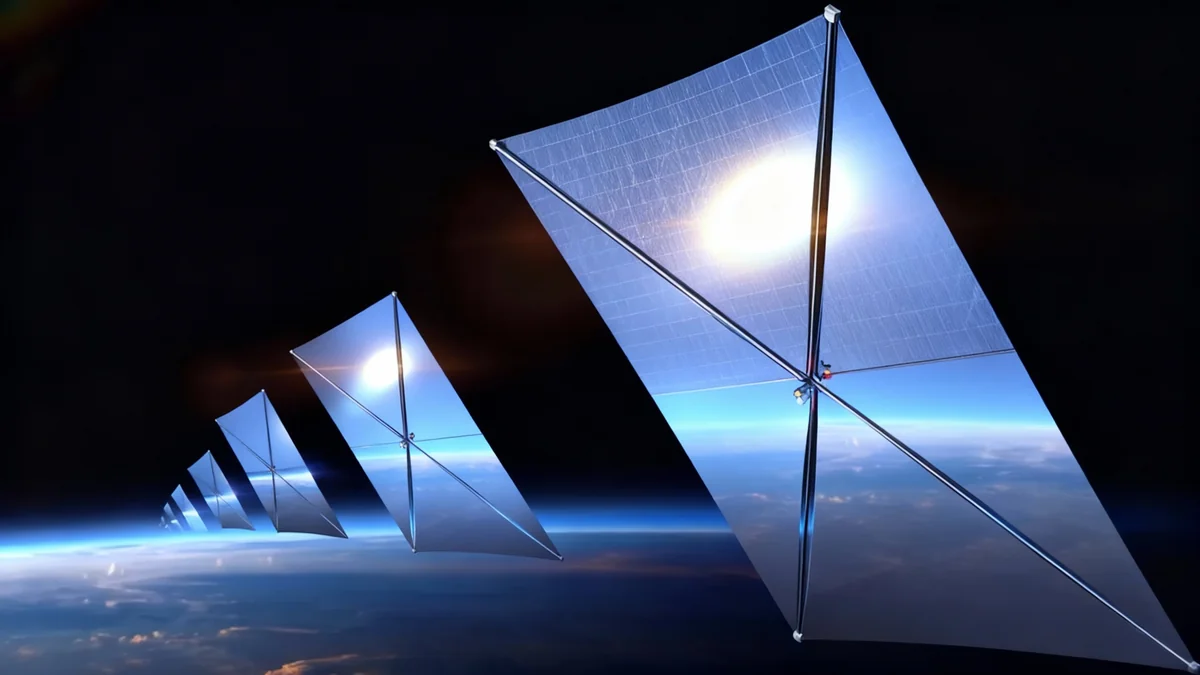A high-altitude scientific balloon operated by NASA made an unexpected landing in a West Texas farm field on Thursday, prompting a swift recovery operation. The large research balloon, carrying a sophisticated telescope, descended onto a property in Hale County, surprising local residents who witnessed the event.
The Hale County Sheriff's Office confirmed the object was part of an unmanned NASA mission designed for astrophysical research. A specialized team from NASA's Columbia Scientific Balloon Facility was dispatched to the location to retrieve the valuable scientific payload and balloon materials.
Key Takeaways
- A NASA high-altitude research balloon landed unexpectedly in a Hale County, Texas, farm field on a Thursday morning.
- The balloon was carrying a 1,500-pound telescope named 'PICTURE-D' as part of a mission with the University of Massachusetts Lowell.
- Local residents Ann and Hayden Walter first spotted the descending object and alerted authorities, helping guide the recovery team.
- The mission's goal was to capture high-resolution images of celestial objects from an altitude of approximately 120,000 feet.
An Unusual Morning in Hale County
The day began like any other for residents Hayden and Ann Walter until they noticed a large, unusual object in the sky. Mr. Walter, while starting his truck, called for his wife to come outside and see what he described as a "parachute-like balloon" floating silently above their property.
"I was like, 'Oh my gosh, what?'" Ann Walter recounted. "We both saw this parachute-like balloon floating in the sky." The couple took photographs and videos of the object before it disappeared from view, leading them to believe it had landed nearby.
Concerned, Ann Walter contacted the Hale County Sheriff's Office to report the sighting. She was informed that the object was indeed a NASA research balloon and that a team was already working to track its location. "They thanked me for informing them because a NASA team was already trying to locate and retrieve their equipment," she later posted on social media.
The Scientific Mission and Its Payload
The balloon was part of a significant scientific endeavor involving the University of Massachusetts (UMass) Lowell. The project, funded by a $7 million, five-year grant from NASA's Astrophysics Research and Analysis Program, aims to study celestial phenomena from the edge of Earth's atmosphere.
PICTURE-D Telescope Specifications
- Name: PICTURE-D (Planet Imaging Concept Testbed Using a Rocket-borne Echelle-grating Spectrograph Demonstrator)
- Weight: 1,500 pounds (approx. 680 kg)
- Dimensions: 14 feet long by 4 feet wide
- Purpose: To capture high-resolution images of stars, galaxies, and black holes by operating above most of the Earth's light-distorting atmosphere.
By ascending to an altitude of roughly 120,000 feet, the telescope can achieve a clarity that is impossible for ground-based observatories. This high-altitude observation is a cost-effective alternative to launching a satellite into orbit for certain types of astronomical research.
A Sudden Change in Trajectory
According to the NASA recovery team leader, identified as Garrison, the balloon had been operating as expected over New Mexico. It had spent time gathering data while hovering near the towns of Clovis and Portales into Wednesday night.
"[The equipment] hung around Clovis and Portales for a while, and then early [Thursday] morning, the wind changed," Garrison explained to the Walters. This shift in atmospheric conditions pushed the balloon eastward into Texas, leading to its descent in Hale County.
The exact cause for the decision to bring the balloon down or for its uncontrolled descent has not been officially released. These missions typically conclude with a planned, controlled landing in a remote, pre-approved area.
A Coordinated Recovery Effort
Following the call to the sheriff's office, the Walters played a direct role in the recovery. After confirming the balloon had landed on a neighbor's farm, Hayden Walter was able to communicate with the NASA team.
"Hayden was able to contact Garrison and drop a pin so they could find where they were," Ann Walter explained. This coordination allowed the recovery crew from NASA's Columbia Scientific Balloon Facility (CSBF) to quickly navigate to the precise landing site.
NASA's Scientific Balloon Program
NASA has operated a scientific ballooning program for decades, launching large, unmanned balloons from facilities like the one in Palestine, Texas. These balloons carry scientific instruments to near-space altitudes for research in fields like astrophysics, heliophysics, and atmospheric science. They provide a unique and relatively low-cost platform for science and technology development.
The efficiency of the NASA team impressed the local observers. Ann Walter, who had just started training for a new job, felt the event was too significant to miss. "I reached out to my instructor and stated, 'I'm sorry, I have to go check this out,'" she said. Her instructor permitted her to go, allowing her to witness what she called a "once-in-a-lifetime situation."
She reported that the crew arrived promptly and went straight to work. "The team showed up and started putting everything up," she noted, adding that they managed to pack all the equipment, including the large telescope and deflated balloon, within about an hour.
Community Reaction and Mission Context
The unexpected arrival of a NASA experiment turned an ordinary Thursday into a memorable event for the small Texas community. The sight of the massive balloon and the subsequent arrival of a federal recovery team created a stir, with local families gathering to see the scientific hardware up close.
The incident occurred during a period of a U.S. government shutdown, which had left many non-essential NASA offices understaffed. This raised some questions about the monitoring and operational status of such scientific missions, though the rapid response of the CSBF recovery team suggests that essential flight and safety operations remained active.
While the landing was not in its intended location, the successful recovery of the 1,500-pound telescope and its associated hardware means the valuable data collected during its flight is likely secure. Scientists at UMass Lowell will now be able to analyze the information gathered from 120,000 feet, furthering our understanding of the universe.





